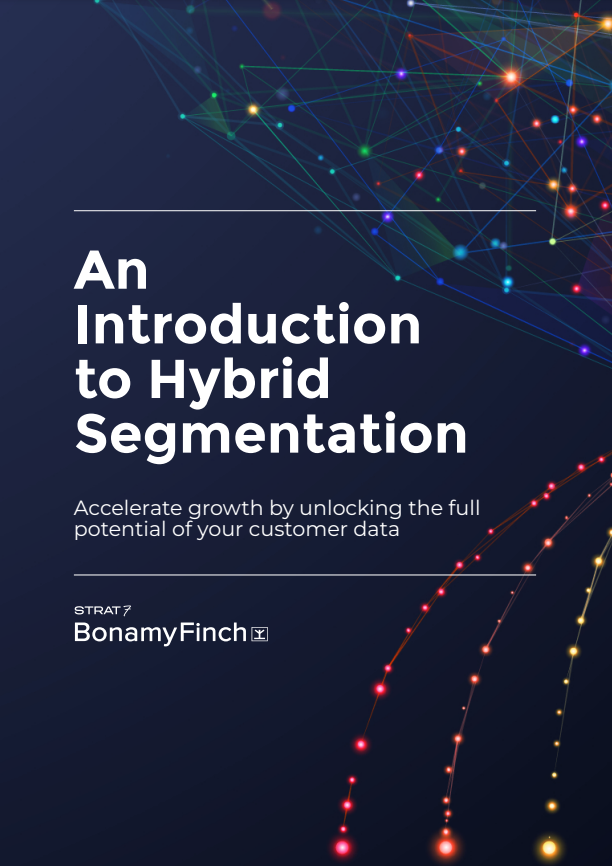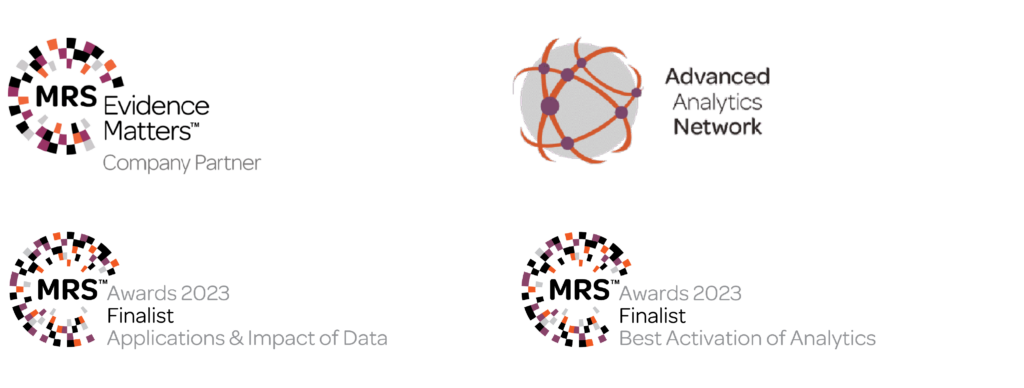In our previous blog, we introduced you to the concept of hybrid segmentation and explored its significance in the ever-evolving landscape of customer understanding.
As a quick recap, hybrid segmentation is a cutting-edge approach that combines the strengths of survey-based and database customer segmentation while addressing their limitations. It’s all about gaining a deeper understanding of your customers, delivering personalised experiences, and driving business growth.
Watch our one minute video to get up to speed:
Now, let’s dive deeper into how hybrid segmentation can supercharge customer engagement, transforming how you interact with and delight your customers. We’ll draw insights from our ebook An Introduction to hybrid segmentation.
The power of personalisation
Delivering tailored experiences at scale
Real-world benefits for customer engagement
Here we look at how hybrid segmentation can translate into real-world benefits for boosting customer engagement, using examples from a travel company.
Increased product and service uptake:
With a deep understanding of customer motivations and behaviours, you can tailor your offerings to meet their specific needs. Hybrid segmentation excels in this area by uncovering the ‘why’ behind customer behaviours.
The travel company used the ‘why’ for innovation. Segment A preferred traditional touring experiences, while Segment B sought more authentic, culture-filled tours. Armed with this knowledge, the company created a new proposition entirely tailored to Segment B, which was the most valuable segment at the time.
As the segments were tagged on its database, the travel company could share its proposition with customers who were likely to take up flexible tours. Razor-sharp product positioning alongside effective comms resulted in a 215% uptake of the new product versus other holiday products, showcasing that the proposition was well-positioned for the target segment
Improved customer centricity:
Hybrid segmentation helps you improve customer centricity. With a deeper understanding of your customers’ needs, you can create and modify your services so they’re completely moulded around your customers, driving satisfaction.
The travel company’s hybrid segmentation revealed how some segments valued holiday representatives much more than others. Being on the database, they could identify which hotels were under or over-resourced with holiday reps based upon the segments visiting.
In a trial, the company reallocated its rep-resource across its hotels in six cities to see how this impacted specific KPIs. The results were eye-opening. There were significant improvements in overall satisfaction and overall service feedback, along with a significant reduction in customer complaints.
Improved customer loyalty:
When customers feel understood and valued, they are more likely to stay loyal to your brand. Hybrid segmentation enables you to create experiences that resonate with your customers, fostering long-term relationships.
Hybrid segmentation helped the aforementioned travel company deliver personalisation at scale to improve customer loyalty. It understood the personality, needs and feelings of its segment. This understanding helped the company create and share targeted brochures to specific customers, rather than distributing them to everyone in its database. The ROI of these brochures more than covered the cost of the segmentation programme itself.
Hybrid segmentation isn’t just a buzzword; it’s a transformative approach that can revolutionise your customer engagement strategies. By understanding the ‘what’ and ‘why’ behind customer behaviours and personalising experiences at scale, you can become more customer centric, boost customer loyalty, drive engagement, and increase product and service uptake.
Stay tuned for our next blog, where we’ll explore more tangible benefits of hybrid segmentation, from gaining a competitive edge to increasing operational efficiency.
Ebook
An introduction to hybrid segmentation
Download our ebook to learn more about how this advanced approach to segmentation will elevate every customer interaction you have, fuelling business growth.



